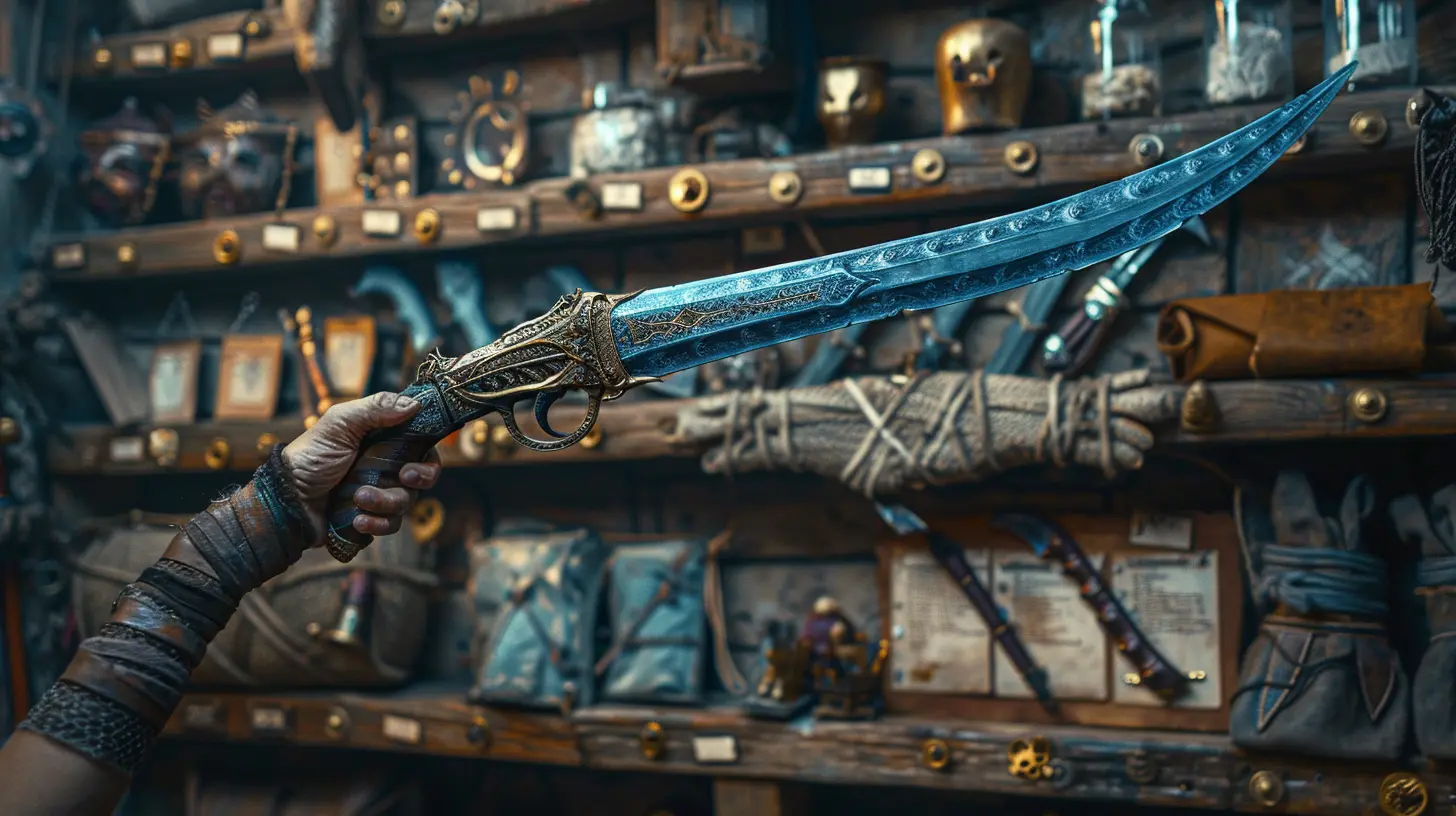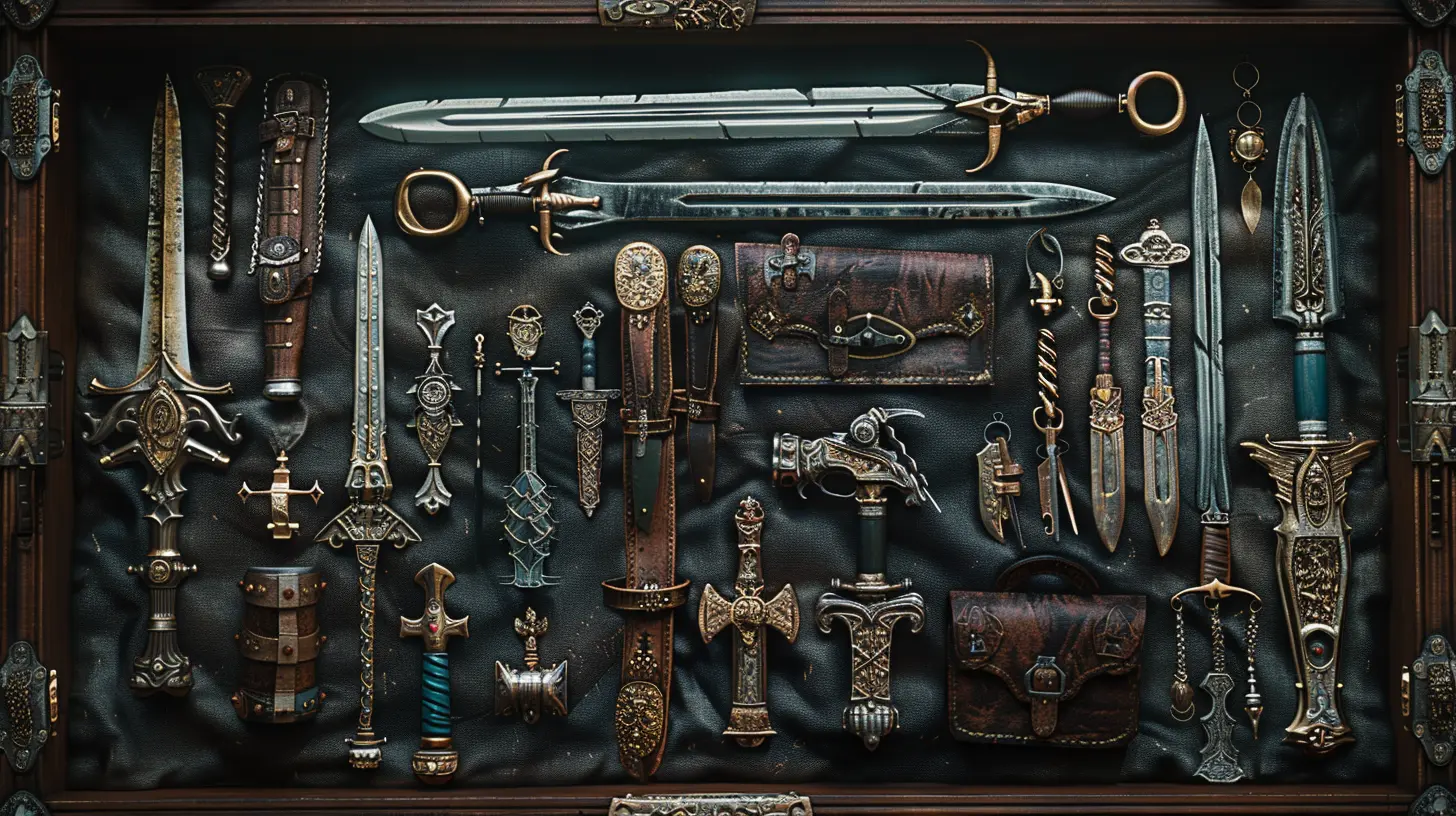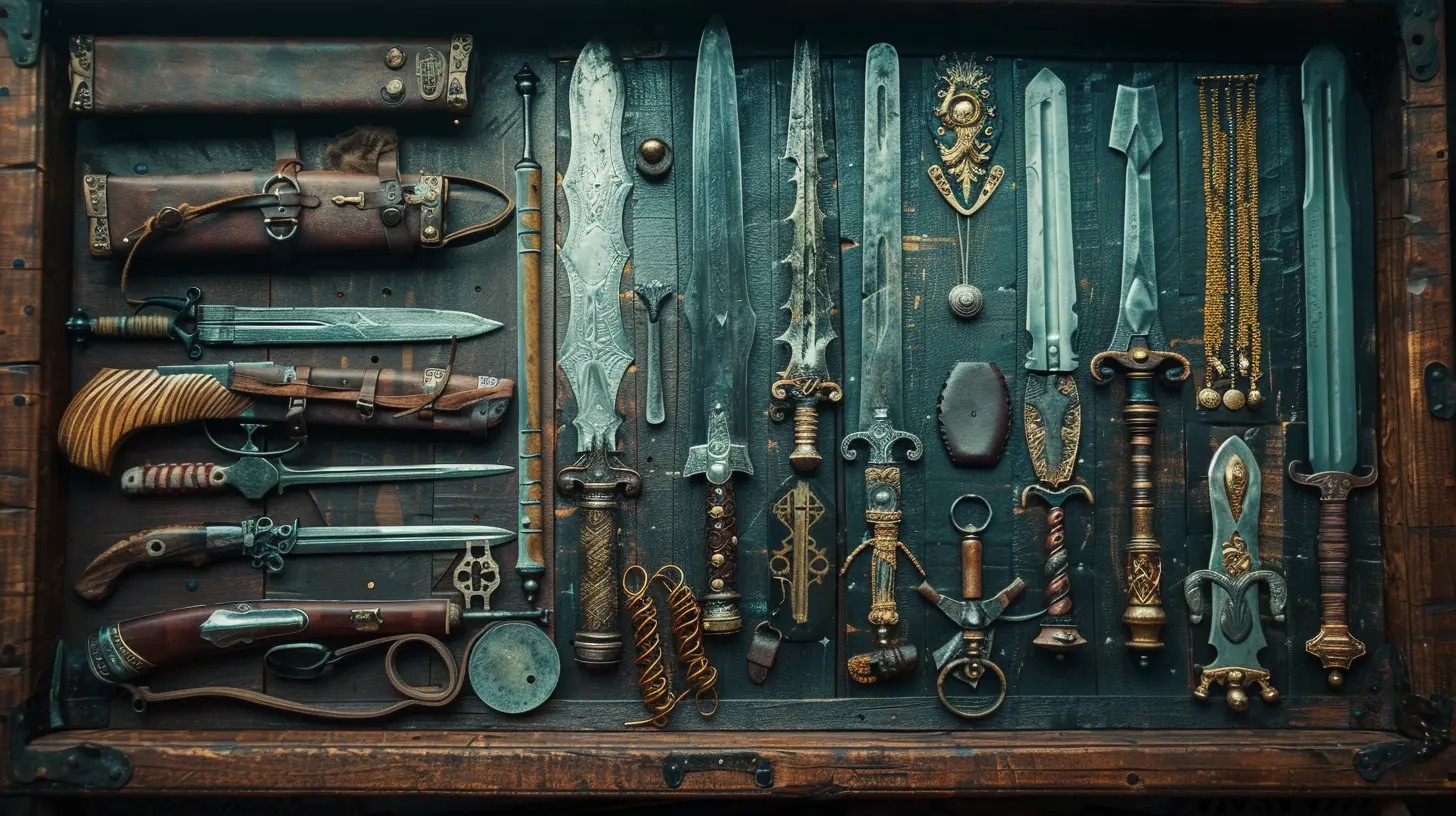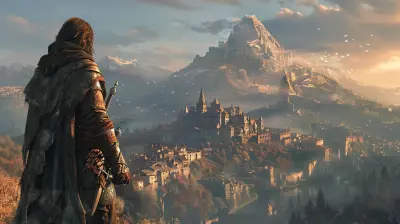Guide to Crafting the Best Weapons in Adventure Games
9 November 2025
So, you're knee-deep in a dragon-infested dungeon, your sword's duller than a butter knife, and you're wondering—how do I craft something that'll actually make a dent? Welcome to the ultimate guide to crafting the best weapons in adventure games. Whether you're scavenging scrap in a post-apocalyptic wasteland or forging enchanted blades in a mystical realm, this guide will walk you through how to make weapons that’ll have both monsters and enemies shaking in their boots (if they’re even wearing any).

Why Weapon Crafting Is a Big Deal in Adventure Games
Before we charge headfirst into anvils and enchantments, let’s pause for a second—why is crafting even worth your time?Simple. Pre-made weapons can only take you so far. Crafting gives you flexibility, power, and the ability to tailor your gear to your playstyle. Want a sword that sets enemies on fire and steals a bit of their soul while you're at it? Crafting’s your ticket. Plus, let’s be honest—it just feels darn good to say, “Yeah, I made that.”

The Core Ingredients of a Killer Weapon
Almost every adventure game makes you gather materials before you can craft anything useful. It’s like cooking, but instead of herbs and spices, you’re collecting dragon bones and lava crystals.1. Base Material
This determines your weapon’s durability and base stats. Think steel, obsidian, mithril, or even bone. Got something rare? Save it for your best builds.2. Enhancement Items
These are the magic sprinkles—fire gems, poison glands, cursed runes. Add these to give your weapon elemental damage, status effects, or special abilities like life-steal or enemy knockback.3. Crafting Tool or Station
No point in gathering materials if you don’t have the right tools. Blacksmith forges, enchanted anvils, or crafting benches—these are your weapon-crafting playgrounds. Some games even let you upgrade your workstation for better results.4. Skill or Blueprint
You can’t just slap things together and hope for the best. Some games require a specific crafting skill level or a blueprint/schematic to create advanced weapons. Don’t skip the tutorials; they often hide a boatload of helpful info.
Types of Craftable Weapons in Adventure Games
Different games, different arsenals. But generally, weapons fall into a few major categories, each with their own charm (and devastating potential).Melee Weapons
Swords, axes, daggers, hammers—these are your up-close-and-personal tools of destruction.- Best for: Warriors, rogues, tanky characters.
- Crafting Tips: Focus on durability and speed. A heavy axe may hit hard but slow you down.
Ranged Weapons
Bows, crossbows, slings, or even throwing knives.- Best for: Stealth builds, snipers, or hit-and-run players.
- Crafting Tips: Lightweight materials help with draw speed and reload times. Add modifiers like poison or explosive ammo for extra spice.
Magic Weapons
Staves, wands, tomes, or enchanted trinkets.- Best for: Mages, elementalists, support roles.
- Crafting Tips: Focus on elemental affinity and mana consumption. A fire staff that drains your entire mana pool is more curse than blessing.
Hybrid Weapons
Sword-staffs, gunblades, chakrams—you get the idea.- Best for: Jack-of-all-trades players who love versatility.
- Crafting Tips: Hybrid weapons often require rare materials or dual-skill leveling. Make sure your character build supports both functions.

How to Unlock Weapon Crafting Features
Crafting isn’t always available from the start. Some games like to make you work for it.- Main Quest Progression: In many story-driven games, crafting tools or stations unlock after specific story milestones.
- Side Quests and NPCs: Ever helped a grumpy old blacksmith only to find out he’s the best weaponsmith in the realm? Yeah, do those side quests.
- Skill Trees: Some games lock crafting behind character skill trees. Investing points in blacksmithing or alchemy can unlock powerful recipes.
- Exploration: Sometimes, you just need to dig a little—literally. Hidden caves or ancient ruins often hold blueprints or materials.
Crafting Strategies for Game Progression
Crafting’s not just about one-off weapons. It should evolve with you. Here's how you can use it like a pro:Early Game
Stick to basic weapons with simple enhancements. Don’t waste rare materials yet. Focus on crafting something slightly better than what you loot.Mid Game
By now, you should have access to better materials and more blueprints. Start crafting weapons that complement your playstyle. For example, if you’re a rogue, go for daggers that add bleed effects or stealth bonuses.Late Game
This is where you unleash the big guns—figuratively or literally. Use your rarest materials, max-out upgrades, and forge legendary-tier gear. These should be weapons that carry you through boss fights and final battles.
What Makes a Weapon Truly “The Best”?
Good question. "Best" is subjective, but a few universal traits define a top-tier crafted weapon:- High Damage Output: Obvious, but essential.
- Durability: Who wants a sword that breaks halfway through a fight?
- Special Effects: Elemental damage, life-steal, armor penetration—these can turn a decent weapon into a game-changer.
- Synergy With Your Build: The best weapon is the one that fits your character like a glove.
- Upgradability: Can it evolve with you? That’s a huge plus.
Crafting vs. Looting: The Eternal Debate
You might be wondering—why bother crafting when you can just loot awesome gear?Here's the thing. Loot is luck; crafting is control. Looting is like fishing in a lake—you might catch something amazing, or you might hook an old boot. Crafting lets you build exactly what you need, when you need it. Want a blade that freezes time and spits lightning? You won’t find that lying in a goblin’s pocket.
Common Crafting Mistakes to Avoid
Let’s steer you clear of rookie mistakes:- Wasting Rare Materials Early: Hold onto those dragon hearts till you really need them.
- Not Reading Effects Carefully: Just because it glows doesn’t mean it’s good. Check if an effect actually helps your build.
- Ignoring Crafting Skills: Level up that blacksmithing or enchanting tree. A higher skill often leads to better weapons with less material.
- Skipping Upgrades: Crafted weapons can usually be upgraded. Don’t leave them at base stats.
Secret Crafting Easter Eggs in Adventure Games
Some games hide ultra-rare crafting options behind secret conditions—think Easter eggs for the weapon world.- Chain Quests: Complete a series of obscure side quests, and boom—you’ve unlocked a sword that sings during battle. Yes, that exists.
- Rare NPC Interactions: Sometimes chatting with a random villager 20 times unlocks a special blueprint.
- World Events: Limited-time events in some games let you craft exclusive, often overpowered weapons.
- Unique Material Combinations: Mixing uncommon materials in odd ratios can sometimes surprise you with hidden weapon types or effects.
Games That Nail Weapon Crafting (And Why)
Not all adventure games do crafting right. But a few stand out:The Witcher 3: Wild Hunt
Crafting here feels like an extension of Geralt’s survival skills. You gather materials, find schematics, and use blacksmiths of varying levels. Crafted Witcher gear? It's some of the best in the game.Skyrim
Oh boy, where do you start? From basic iron swords to Daedric gear, crafting is deep, rewarding, and, with the right perks, game-breaking in the best way.Monster Hunter: World
Here, crafting is the entire loop. You hunt beasts to make gear to hunt bigger beasts. It’s a circle of carnage powered by insanely cool weapon designs.The Legend of Zelda: Tears of the Kingdom
This one introduces fusion crafting, letting you attach virtually any item to your weapon. Want a flaming Moblin horn on your sword? Go wild.Final Thoughts: Crafting Is an Art, Not a Grind
At the heart of adventure games lies the thrill of the journey and the tools we choose to survive it. Crafting the best weapons isn’t about just stacking numbers—it’s about creativity, understanding your gameplay style, and making something that's truly yours.Treat crafting like an art, not a chore. Tinker with combinations, experiment with effects, and always keep pushing for that perfect weapon. Because when you finally craft that blade, bow, or staff that feels just right... well, that’s when the real adventure begins.
all images in this post were generated using AI tools
Category:
Game GuidesAuthor:

Leandro Banks
Discussion
rate this article
1 comments
Tristan Jacobs
Depth over quantity makes crafting exhilarating.
November 14, 2025 at 4:17 AM

Leandro Banks
Absolutely! Focusing on depth allows for more meaningful crafting experiences, enhancing gameplay and creativity.


